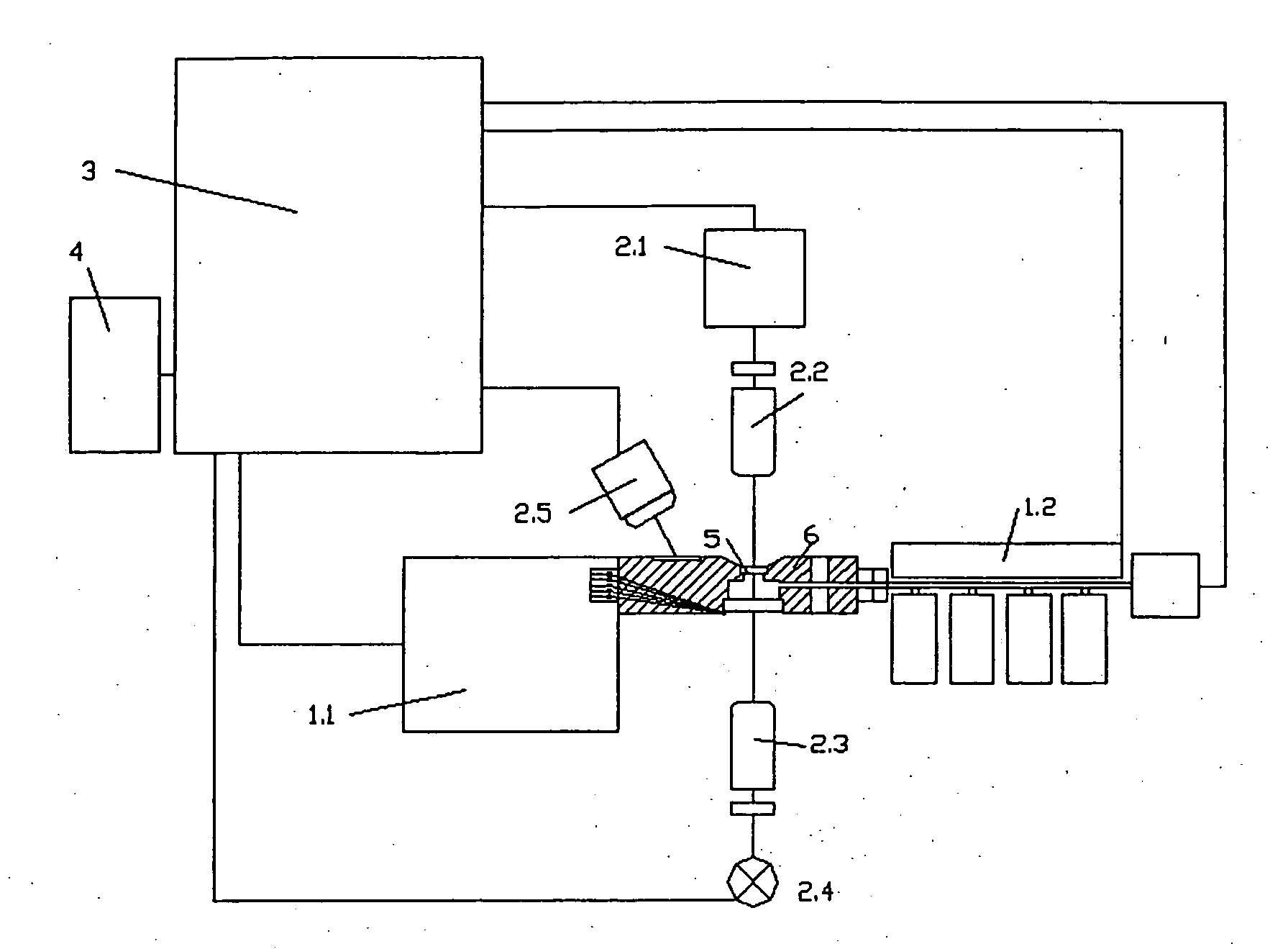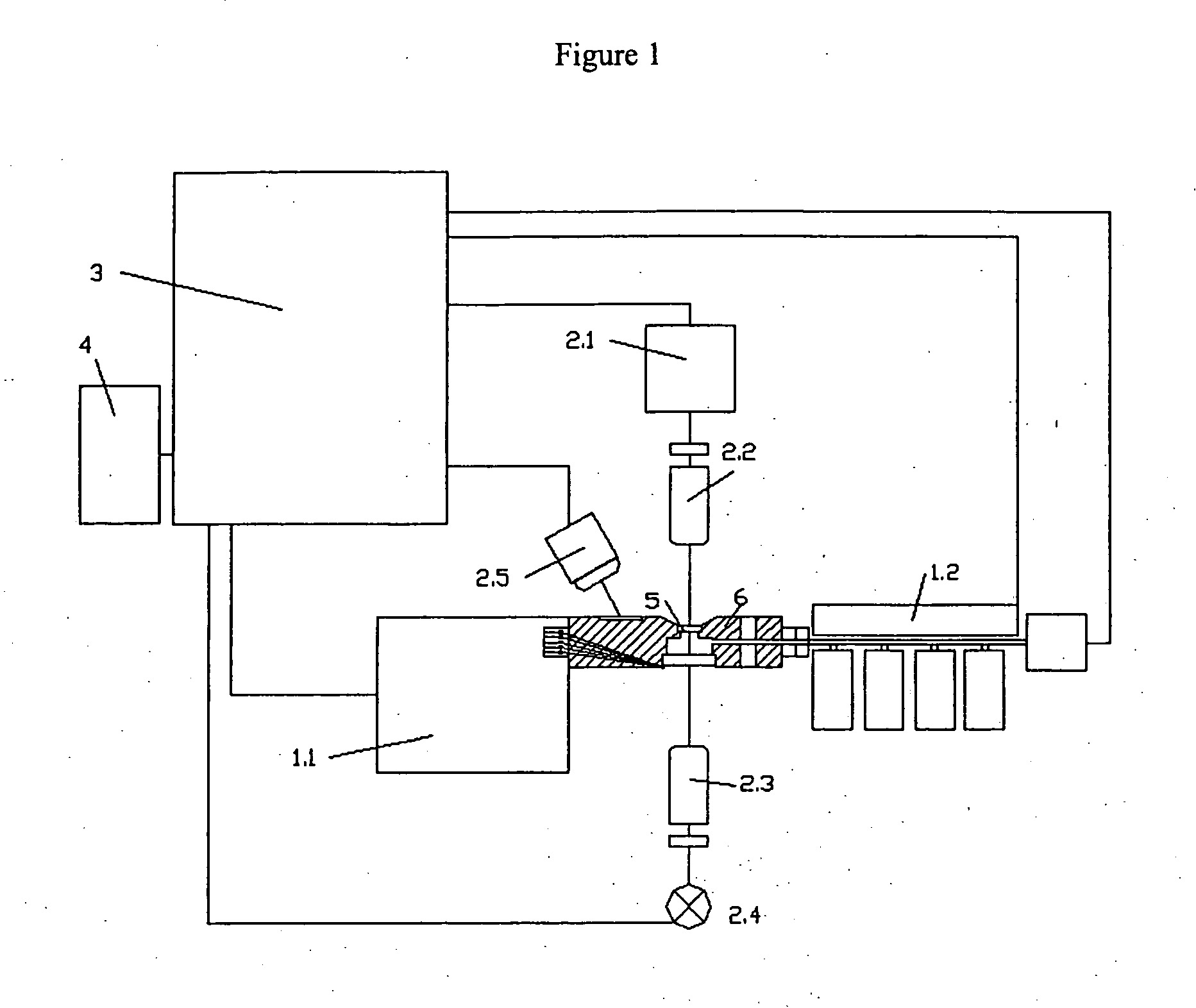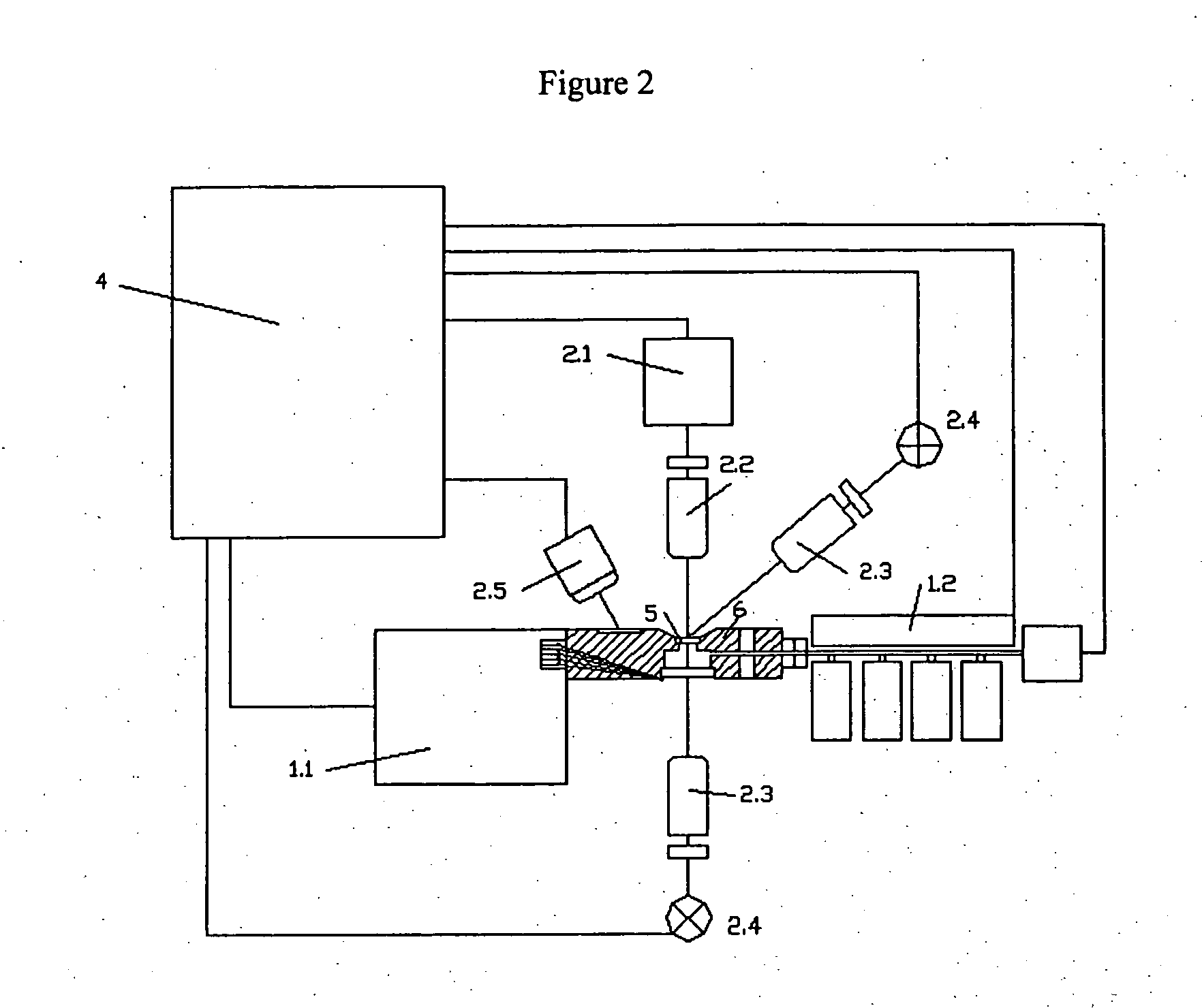Device for the amplification and detection of nucleic acids
a nucleic acid and amplification technology, applied in the field of nucleic acid amplification and detection devices, can solve the problems of arrays, complex illumination optics and filter systems, and signal noise (the background), and achieve the effects of improving control, optimizing detection reaction, and high probe density
- Summary
- Abstract
- Description
- Claims
- Application Information
AI Technical Summary
Benefits of technology
Problems solved by technology
Method used
Image
Examples
example 1
[0560] Optical detection of kinetically proceeding signal enhancement reactions
[0561] In the following variants of the example, the optical detection of kinetically proceeding signal enhancement reactions is performed by means of recording the modulations of particular optical parameters, in particular of transmission, reflection, dispersion, diffraction, and interference.
[0562] The accumulation of silver during a silver precipitation reaction at, for example, target molecules labeled with gold particles after a specific hybridization with sample molecules immobilized on solid surfaces or synthesized sample molecules grows epitaxial layers, which significantly alter the optical properties of the entire system. The signal enhancement of gold-labeled target molecules is, for example, described in detail in the International Patent Application WO 02 / 02810, the contents of which are hereby explicitly referred to.
[0563] a) Transmission
[0564] The detection of the alteration of transmi...
example 2
[0578] Electrical detection of kinetically proceeding signal enhancement reactions
[0579] In the following variants of the example, the electrical detection of kinetically proceeding signal enhancement reactions is performed by means of recording modulations of specific electrical parameters, in particular of conductivity, resistance alterations, and permeability.
[0580] The accumulation of silver during a silver precipitation reaction at, for example, target molecules labeled with gold particles after a specific hybridization with sample molecules immobilized on solid surfaces or synthesized sample molecules grows epitaxial layers, which significantly alter the optical properties of the total system. The signal enhancement of gold-labeled target molecules is, for example, described in detail in the International Patent Application WO 02 / 02810, the contents of which are hereby explicitly referred to.
[0581] In the device described in this example of the present invention, the indivi...
example 3
[0584] Amplification and detection of nucleic acids in narrow reaction chambers
[0585] One possibility of keeping the signal in the solution low compared to the signal on or within the surface is the use of particularly narrow reaction chambers. The enrichment of target molecules on the array surface caused by the specific binding of probe and target facilitates imaging the signals on the probe array also by means of a conventional fluorescence-optical system, which illuminates and / or images the entire volume, provided that the reaction chamber is designed in a correspondingly narrow manner.
[0586]FIG. 11 shows the correlation between layer thickness and / or chamber thickness and the number of molecules labeled with a fluorescence marker, which are located in the supernatant immediately above the spot.
[0587] It has been investigated that, using a detector with 8-bit resolution, like for example an epifluorescence microscope (Zeiss, Jena, Germany), the microarrays used within the sco...
PUM
| Property | Measurement | Unit |
|---|---|---|
| thick | aaaaa | aaaaa |
| surface roughness | aaaaa | aaaaa |
| thickness | aaaaa | aaaaa |
Abstract
Description
Claims
Application Information
 Login to View More
Login to View More - R&D
- Intellectual Property
- Life Sciences
- Materials
- Tech Scout
- Unparalleled Data Quality
- Higher Quality Content
- 60% Fewer Hallucinations
Browse by: Latest US Patents, China's latest patents, Technical Efficacy Thesaurus, Application Domain, Technology Topic, Popular Technical Reports.
© 2025 PatSnap. All rights reserved.Legal|Privacy policy|Modern Slavery Act Transparency Statement|Sitemap|About US| Contact US: help@patsnap.com



